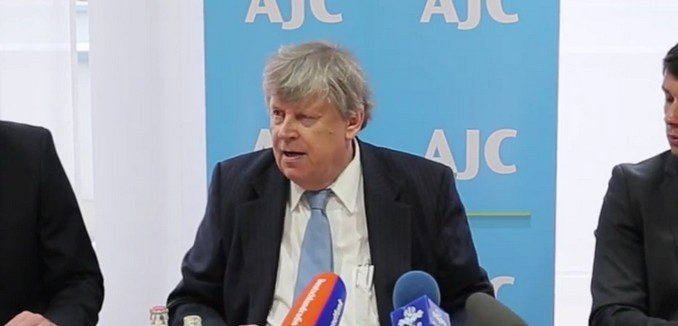Olli Heinonen, the former deputy director general of the International Atomic Energy Agency (IAEA), raised concerns about the emerging nuclear deal between the P5+1 nations in an interview today with The Times of Israel. Heinonen specifically mentioned the risk of regional nuclear proliferation, the opportunity for an Iranian nuclear breakout when limits of the deal expire, and questions over enforcing the deal’s imposed limits.
Although it appears to be more robust than previous nuclear agreements, [Heinonen] said missteps could result in a repeat of the outcome that the non-proliferation regime suffered when North Korea violated the terms of an agreement and rushed toward a nuclear bomb.
Heinonen said the current framework also lacks an emphasis on Iran coming clean about its entire nuclear program heretofore, including the actual number of centrifuges in operation. Such information, Heinonen says, is of central importance to monitors’ ability to enforce and monitor the current nuclear program.
The missteps Heinonen referred to could result from aspects of a verification process that aren’t sufficiently spelled out.
For example, the mechanism for confirming and responding to Iranian violations isn’t clearly defined. Heinonen observed that it isn’t clear that the IAEA would have unlimited access to undeclared sites in Iran. Furthermore, there are questions how fast the international community could respond to discovered violations. (President Barack Obama acknowledged these concerns in an interview with The New York Times over the weekend.)
Heinonen explained why the process for responding to violations would not be immediate.
“We have here two aspects of compliance, a safeguard agreement and the original protocol. The original guarantor of the compliance will be the IAEA, and the IAEA will report and then the Security Council will support a resolution in the case of non-compliance,” he explained. “But the question is what constitutes ‘non-compliance’. Certainly when you have a secret place to produce components [and it is discovered], that is clear. But what happens if you produce a little more at an inspected site? What is the level of tolerance, and who decides how much constitutes non-compliance? The IAEA provides the facts and there is a body like the Security Council that acts on the basis of its reports.”
While the emerging deal foresees inspections of Iranian sites, it doesn’t address aspects of the Iranian nuclear program that could be outsourced to other countries. Even within Iran’s borders, there is no guarantee that the IAEA will get to investigate violations as soon as they’re discovered. And even then, the severity of the violation and the severity of the response would need to be determined.
“When Natanz was revealed in August 2002, it took half a year until February 2003 before the IAEA got in,” he said. “The explanation was that this was the first place and said that it was a pilot plant. They used the half-a-year to build the pilot plant, in order to cover up the other place where they did research and development.” The same deceptive policy, he said, also underscored the development of the secret underground facility at Fordo.
“You may have a combination of secret and non-secret development. One must be careful with timeliness – it is quite a challenge to maintain one-year breakout time for the known and the unknown,” he warned. “There is never absolute assurance about activities and undeclared material, and there are other examples from the past in which intelligence was unable to find nuclear projects.”
Regardless of the terms of the deal between the P5+1 nations and Iran, any inspections plan would still have to be negotiated between Iran and the IAEA.
Heinonen also advised the public not to read too much into the terms of the deal publicized so far. The differences between various parties’ published terms probably can be traced back to a “rolling text” of issues being discussed but not decided. Still, Heinonen said he believes that the three months until the final June 30 deadline is too short a time to adequately address all the issues and come to a “precise agreement.”
While Heinonen expressed reservations about possibility of drawing up an effective regime for preventing Iran from achieving a nuclear breakout, he also pointed out that the negotiations could lead to nuclear proliferation. By allowing Iran to keep its enrichment program, which was started in violation of Iran’s Nuclear Nonproliferation Treaty obligations, other countries will seek the same rights. Some countries, such as South Korea and the United Arab Emirates, which have nascent nuclear programs, may now seek permission to enrich uranium. Saudi Arabia, which has invested an estimated $1 billion in its nuclear program, may now look to upgrade its nuclear program too.
[Photo: AJC Berlin / YouTube ]




